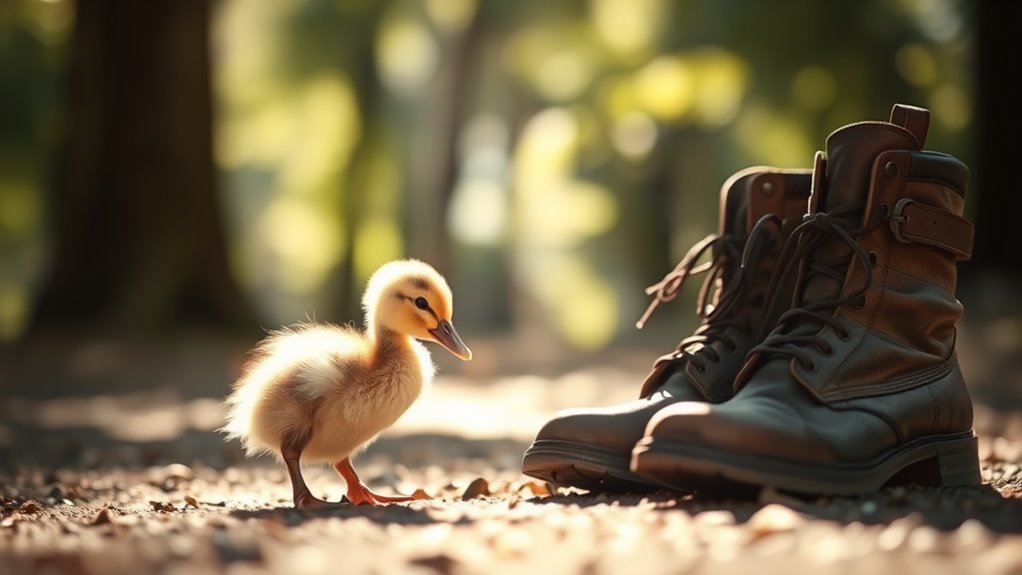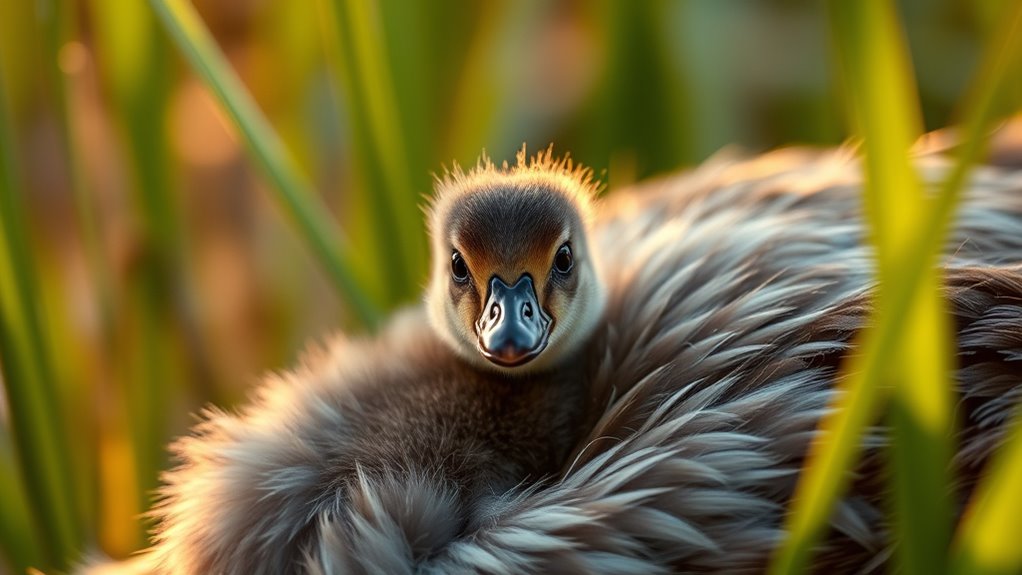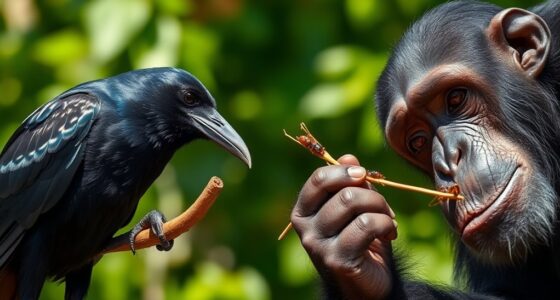Imprinting’s a essential process that shapes your behavior through early experiences. As you grow, the first attachments you form influence your social interactions and emotional responses. During critical periods, your brain develops pathways that define how you connect with others. If you miss these windows, it can hinder your ability to form healthy relationships later in life. Understanding imprinting can reveal even more about how your early experiences impact your journey through life.
Key Takeaways
- Imprinting is crucial for young animals to form attachments, influencing their social skills and behaviors throughout life.
- Critical periods exist when young animals are most receptive to imprinting, affecting their neural development and future relationships.
- Early experiences during imprinting shape individual traits and innate instincts, guiding behavior and social interactions.
- In humans, early caregiver relationships significantly impact emotional responses and social abilities, highlighting the importance of nurturing environments.
- Disruptions during critical periods can hinder emotional development, underscoring the lasting effects of early experiences on behavior.

Imprinting is a fascinating process where young animals form attachments to their caregivers or the first moving object they encounter. This process plays a pivotal role in shaping their behavior and social interactions throughout their lives. You might find it surprising how these early experiences can dramatically influence an animal’s development, impacting everything from social skills to survival instincts. The concept revolves around critical periods, which are specific windows in an animal’s early life where they’re particularly receptive to forming these attachments. Missing these windows can lead to long-lasting effects on their behavior.
During these critical periods, the brain undergoes rapid neural development. This phase sets the foundation for how the animal will perceive the world around them. For instance, when a duckling hatches, it instinctively follows the first moving object it sees, often its mother. This behavior not only ensures that the duckling stays close to a source of protection and nourishment but also solidifies the bond that will guide its social interactions later in life. The neural pathways that develop during this time are essential; they create a blueprint for future relationships and behaviors.
During critical periods, rapid neural development shapes how young animals perceive their world and form vital social bonds.
If you think about it, the implications of imprinting aren’t just limited to animals. Humans experience their own forms of imprinting, especially in the early years of life. Your early attachments to caregivers can shape your emotional responses and interpersonal relationships as you grow older. Just like in animals, the critical periods for humans involve heightened sensitivity to social cues, making it necessary for caregivers to provide a nurturing environment. Any disruptions during this time might hinder healthy emotional development.
As you observe animals in their natural habitats or even in domestic settings, you can see the effects of imprinting firsthand. Look at how a puppy bonds with its owner or how a fawn stays close to its mother. These behaviors stem from a deeply ingrained instinct, fine-tuned through neural development during those critical periods. By understanding imprinting, you can appreciate how essential those early experiences are and how they shape not just individual identities but also larger social structures. Interestingly, just as WWE Raw generates billions in revenue through its extensive audience engagement, early experiences in imprinting can similarly have a profound impact on the success and social dynamics of individuals throughout their lives.
In essence, imprinting isn’t merely an animalistic behavior; it’s a fundamental aspect of development that resonates across species, including humans. These early attachments and experiences lay the groundwork for a lifetime of behavior, social skills, and emotional health.
Frequently Asked Questions
How Does Imprinting Differ Between Species?
Imprinting differs between species in significant ways. You’ll find that species-specific imprinting shapes behaviors unique to each group, like how ducklings follow their mother right after hatching, while other animals may not imprint at all. Cross-species differences also highlight how various environmental factors influence development. Understanding these variations helps you appreciate the diverse strategies animals use to bond and learn, ensuring their survival in different habitats.
Can Imprinting Be Reversed Later in Life?
You can’t just erase imprinting like wiping a slate clean, but it can shift. Picture a river carving a path; over time, it can find a new course. Neural plasticity lets your brain adapt, even in adulthood, but it often hinges on critical periods. While early experiences shape you, there’s potential for change. Engage with new experiences and relationships, and you might find those old patterns aren’t as rigid as they once seemed.
What Role Does Genetics Play in Imprinting?
Genetics plays a vital role in imprinting through genetic inheritance and biological predispositions. You inherit certain traits from your parents that can influence how you respond to early experiences. These predispositions can shape your behavior and emotional responses, making some individuals more susceptible to specific environmental influences. While your genetic makeup sets the foundation, your experiences further mold your behavior, creating a complex interplay between nature and nurture throughout your life.
How Can Caregivers Influence Imprinting Outcomes?
Caregivers can critically influence imprinting outcomes by fostering secure attachment styles and emotional bonding. By being responsive and attentive to a child’s needs, you create a sense of safety and trust. This helps the child develop positive relationships and healthy emotional responses. Consistent nurturing, open communication, and affection also strengthen the bond, guiding the child in forming secure attachments that shape their behavior and interactions throughout life. Your role is essential in this developmental process.
Are There Cultural Differences in Imprinting Behaviors?
Absolutely, there are cultural differences in imprinting behaviors. Have you ever noticed how societal norms shape parenting styles? In cross-cultural parenting, some cultures emphasize independence, while others prioritize community and interdependence. These differing approaches influence how children bond with caregivers and perceive their environment. For instance, in collectivist societies, you might see stronger group attachments, while individualistic cultures often promote self-reliance and personal exploration. Understanding these nuances helps you appreciate the diversity in child development.
Conclusion
In the grand tapestry of life, your early experiences weave the threads that shape who you become. Just as the saying goes, “You can’t teach an old dog new tricks,” those formative moments lay the groundwork for your behavior and responses. Acknowledging this can empower you to break free from limiting patterns and embrace growth. By understanding the impact of your past, you can forge a brighter future, transforming challenges into opportunities for change.










